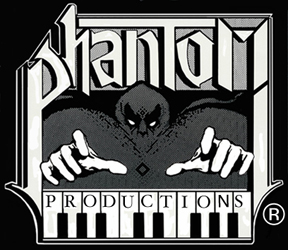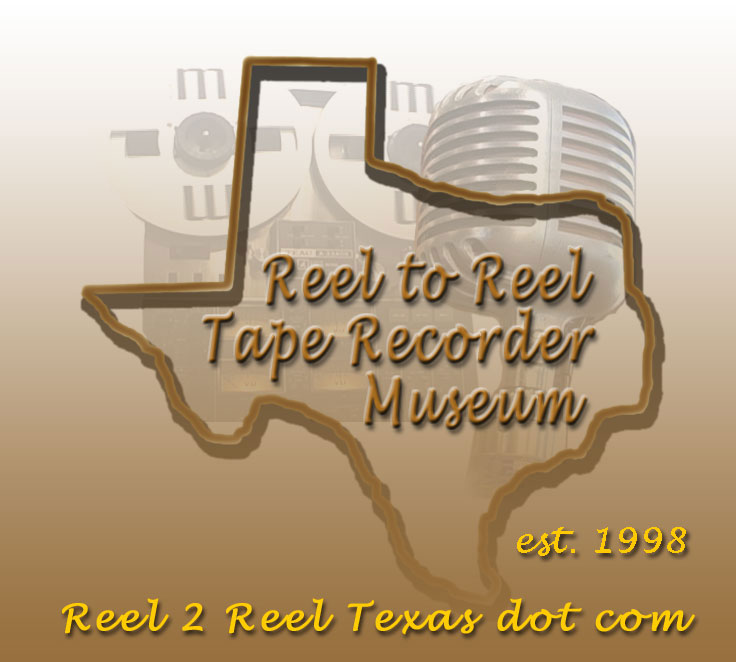|
Reel2ReelTexas Analog Reel To Reel Tape Recorder OnLine Museum Phantom Productions, Inc. • "creative entertainment and production since 1964"
Unfortunately the DVD set is no longer available • Click Here for more info check out our FOR SALE page Share
|
|
How Rheem got into the combo organ business, as told by Doug Moore:
"As far as I know, the whole thing started with a guy named Robert Metzner. He had a small import/export business, and on a trip to Japan, ran across a company that was making a continuously variable speed phonograph motor. He developed an audiophile turntable which he called the "Metzner Starlite" to be made in Japan for sale in the United States. The product was quite successful, so Bob Metzner decided to expand the operation somewhat. He sent an Ampex 600 series recorder to a company in Japan and asked what they would want to make a similar model. The results were the first Roberts recorder models, which were almost identical in appearance to the Ampex600's. These early models were vacuum tube types. In order to build transistor models, the factory in Culver City was started. Only the tape transport mechanisms were purchased from the Japanese company, and everything else was manufactured at the Bowcroft Street plant, even the fabric-covered cases. This factory became quite versatile, having a couple of expert tool and die makers, large punch presses for metal fabrication, a printed-circuit manufacturing and assembly section and a cabinet shop. Facilities were also added to manufacture small transformers and coils in house.
"At some point Bob Metzner sold off his holdings. I don't know if that was before or after the Bowcroft Street plant was in full operation. The new organization had some very savvy management, and decided to branch into other areas where they could fully utilize the capabilities they already had. They were already into school AV equipment making record players using a variation of the old Metzner motor, and tape recorders using the Japanese tape transport. They bought Califone, a manufacturer of record players and other equipment primarily intended for square dance callers. They manufactured record players under the Califone name. With the purchase of Califone they also acquired some patents for a language laboratory Califone had developed. They decided this kind of equipment would fit in with their general scheme and began to pursue this business. At this time, they had a good working relationship with Akai, the manufacturer of the tape transport mechanism. Akai had come out with some new transistor models on their own, and were marketing these in the US under both the Roberts name and their name.
"Meanwhile, Califone/Roberts realized that guitar amplifiers were well suited to being manufactured there, so they designed a few amplifiers and attempted to market them. They were not as successful in this pursuit as they had been with other products, because they had no one there who knew anything about the guitar amplifier market or what was really needed. At some point the existing Califone/Roberts operation was purchased by Rheem. I don't know any of the details of this, except now the company became Rheem/Califone/Roberts. All the old staff were retained including the managers. A couple of new managers were added. One of the new managers claimed to know something about the music industry. He convinced the other managers that the new company should pursue the music business by making products under the Rheem name. They could start with the guitar amplifiers which were already in production. Based on their success with importing, they could have other products made in Japan for distribution and sale by Rheem out of the Bowcroft St. facility. It was at this point that I became involved with Rheem/Califone/Roberts. I was hired by the Chief Engineer, not by management. I had been hired to design a new line of guitar amplifiers. I took on this job with a passion..." " I got kind of a reputation as I had "pickers" coming and going into engineering to test concepts. My theory was that nobody knows better what they want in a product than the people that use them. Thus, the new Rheem guitar amps were really designed by guitarists - all I had to do was translate their language into engineering language. It wasn't easy but it sure was fun. :-) Example: Translate into engineering criteria this sentence, "Hey dude you gots da twang OK but youse needs mo' funk." The new manager of the Musical Instruments department naturally kept a close eye on what I was doing, and figured it was in his domain. He had a couple of Japanese companies build him samples of a "Combo Organ" he wanted to market, but what he received was far short of his expectations. He tried to involve me in the project, but the Chief Engineer would have none of it. We were almost finished with the guitar amplifier designs, which were quite radical, and he didn't want to see my efforts diverted. I was, however, very interested in the organ project, and wanted to get involved somehow. I had become friends with the General Manager of the company, who was a Radio Amateur and organ hobbyist. I had a talk with him about my dilemma, and he suggested I take the prototypes home and use the parts to construct something closer to what I and the Musical Instrument manager thought we wanted. He said Art, (The Chief Engineer.) couldn't object to this. Pitney, (The General Manager.) was also very interested in my ideas for future musical products, and said that if the first products were successful even slightly, it might open the way for some kind of research program. This was all I needed so after talking it over with the others involved, I took the three prototypes home and built what became the Rheem Mark VII organ. I also showed them a prototype of a pedal bass instrument I had designed before I came there, intended to be placed under a piano. This design became the Kee Bass, though this was not what I intended. Under the Rheem name, they also imported some guitars, which were not very good quality.
"The promised research program did materialize, and for about a year I had a free hand in the development of some new products, unhampered by the demands of either Management or Engineering. I brought in one of my friends and together we developed a new small portable organ that could be manufactured at the Rheem plant in the USA and still make a profit. We also developed a rhythm box whose design was later stolen, and an all electronic piano. There were many breakthrough ideas in all of these instruments, but unfortunately before they became reality Mr.. Pitney, the General Manager, was killed in a small plane crash. He had been the one that went to bat for the musical instrument development plan, and with him gone it just all fell apart. Before I left, the whole operation had been sold again to a conglomerate called City Investing, and the Rheem name had been dropped.
Why do the Rheem organs resemble other Japanese organs, such as Ace Tone and Teisco?
"The actual manufacturer of the product for Rheem was Nakane Denki Co., which no longer exists. Nakane made all of the parts except the keyboards, which were made by Tahachiko, the same company that was making them for Yamaha at that time. (1966) Tahachiko no longer exists. Any resemblance of other organs to the Mark VII is probably coincidental. It could be, however, that when Rheem dropped out of the business, the same company in Japan made product using similar parts for someone else. This was not uncommon at the time. I don't know for a fact that this happened, but it is possible"
"The original prototype for the MK VII was made out of several samples that were submitted by several Japanese firms, but I do not know who they were. The original tone generator boards were apparently made by an independent company in Japan and used by several manufacturers. However, Nakane made all the boards in the MK VII including the generator boards. Since they were similar, I suspect they just copied the design they found in the prototype. A lot of this was going on in Japan at this time, so it wouldn't surprise me to find that pieces of the MK VII found their way into other Japanese products."
Also, see the Teisco page for some historical information linking Rheem to Teisco and Kawai.
We invite you to visit the Museum of Magnetic Sound Recording
